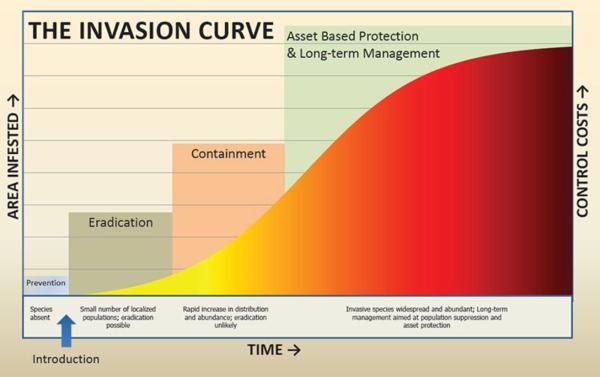To prevent the spread of aquatic invasive species, the Pacific States Marine Fisheries Commission, U.S. Fish and Wildlife Service, Western Regional Panel on Aquatic Nuisance Species, and others are making information available to boat haulers, auctioneers, marinas, manufacturers, and brokers to make it easy to comply with state, provincial and federal laws, prevent costly delays in transporting or selling boats, and help reduce the spread of aquatic invasive species.
In December 2021, the Pacific States Marine Fisheries Commission (PSMFC) initiated a program to prevent delays during the transport of watercraft destined for the states of Washington, Oregon, Idaho, and Montana. The program, Call Before You Haul, provides a toll-free number (1-844-311-4873) boat transporters can call prior to transporting watercraft from outside the Pacific Northwest to one of the aforementioned states. The program was piloted in 10 states.
The Call Before You Haul 1.0 program was initiated in late 2022 prevent the introduction and establishment of quagga and zebra mussels in the Columbia River Basin states and prevent the movement of aquatic invasive species via trailered watercraft. Call Before You Haul 1.0 consisted of creating a 24-7 toll-free number for boat transporters and working directly with state agencies that permit interstate oversize/overweight loads, including watercraft, to raise boat transporter awareness about trailered watercraft as a vector for aquatic invasive species. There remains a significant number of infested watercraft coming from the Great Lakes regions of the United States and Canada to western states.
Call Before You Haul 2.0 expanding in February 2024, is an effort to work collaboratively with Great Lakes region entities to reduce interstate transport of aquatic invasive species — for the benefit of all states and provinces.
See also: Register for kickoff Call Before You Haul 2.0 webinar on February 22, 10-11 am PST.

